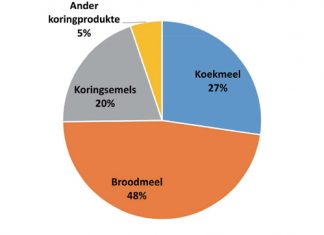
SA Graan/Grain contributor
At the 2017 Grain SA Congress, Prof Ferdi Meyer of the Bureau for Food and Agricultural Policy (BFAP) told delegates that a continuous analysis of the agricultural sector is necessary for producers to identify trends influencing the sector and requiring change management across the entire value chain.
The biggest disruptors have the potential to harm a farming enterprise if there is no attempt to either harness the influence – or alternatively hitch up to it. Trends will undoubtedly have an impact and the resulting macro or micro shifts will shape our sector. David Hollinrake, president of Syngenta Seed and the son of a corn and soybean producer in Illinois, believes agriculture will see dramatic changes in the future. He identifies five megatrends worth noting:
Megatrend 1: Growth in demand for food, fibre and fuel
With a global population estimated to grow from today’s 7,5 billion to between 9,5 billion to 10 billion people by 2050, producers will have to provide food for 2,5 billion more people. This scenario suggests huge opportunity, as we will need 60% more productivity in the future – but this does not come without challenges. How will producers increase output and how will they do so on less land?
Megatrend 2: Technology will help meet demand
There has been a steady growth in average yields achieved under normal growing conditions. We have already witnessed the impact of technologies producing plants that resist insects and products that limit the impact of weeds in our fields. However, David is excited about next generation technologies which see an even greater convergence of biotechnology, crop protection chemistry, gene editing and digitalisation. He holds that data analysis will increasingly supplement what producers know intuitively. Old ways and traditional practices will be challenged.
Megatrend 3: Producers will adopt advanced practices
It is David’s opinion that we are only at the very beginning of AI (artificial intelligence) and its impact on the agricultural sector. Producers will increasingly adopt GPS-guided drones for gathering field data, and farm management will require the use of management software to analyse numbers. Genetically modified plants will resist fungi, viruses and insects, use nutrients more effectively and require less fertiliser, water and crop protection chemicals. The suppliers and producers who adapt the quickest will be the winners.
Megatrend 4: Structural shifts will change the family farm dynamics
Farms will consolidate into larger operations. More hectares will be farmed by fewer producers. The United States already has 13 million hectares farmed by only 714 producers. The modern producer will essentially be return-on-investment, tech-savvy entrepreneurs and their farming businesses will function just like any other corporation.
Also, farms are becoming increasingly more specialised. Crops are grown for specific purposes, such as high starch maize or sunflower cultivars for higher oil content. Farm production is tailored for a specific marketplace. Specialisation improves efficiency and leads to optimal utilisation of farm resources.
Megatrend 5: Socio-political issues will challenge growth
The sector will continue to be challenged by regulatory scenarios, political tensions and trade issues as well as consumer mistrust in agricultural technologies. David believes this trend could continue to have a significant impact on the sector. We need to pay more attention. It is important that we make an effort to understand why there is opposition – and then more needs to be done about addressing the issues. It is the responsibility of all stakeholders to find ways of addressing the socio-political challenges such as the opposition to engineered crops and crop-protection chemicals. He believes distrust has arisen because of the growing disconnect between consumers and where and how their food is grown.
Global futurist, Jack Uldrich, believes consumers are going to put increased pressure on the industry over their carbon footprint, water footprint and methane footprint. The price of food will always be relevant, but other factors will be significant informants of consumer choices in the future. Food safety issues will continue to escalate as consumers expect transparency and traceability.
As a sector we need to ‘connect the head and the heart’ among consumers. Producers are too busy growing the food and balancing the books, so we need to make sure our commodity organisations are paying attention to this trend and designing mitigating responses. David says we have been guilty as an industry of using data as our defence, instead of finding ways to connect with people’s emotions.
Nothing replaces consistent and focussed research and development, but we can’t ignore important partnerships which must emerge between government, the private sector, producers and consumers. Influences on the sector must be monitored for informed and strategic planning. It is increasingly evident that producers need to speak up, speak out and speak to all stakeholders – including consumers and policy-makers.
At the 2020 Grain SA Congress, Chief Justice Mogoeng Mogoeng implored that we tell our story better. Until we have a better avenue of communication, there will always be fake news out there. Prof Meyer supported this by emphasising the importance of identifying trends and looking for creative ways to carry strategic messages from the agricultural sector. This is how we will stay relevant and competitive into the future.

















